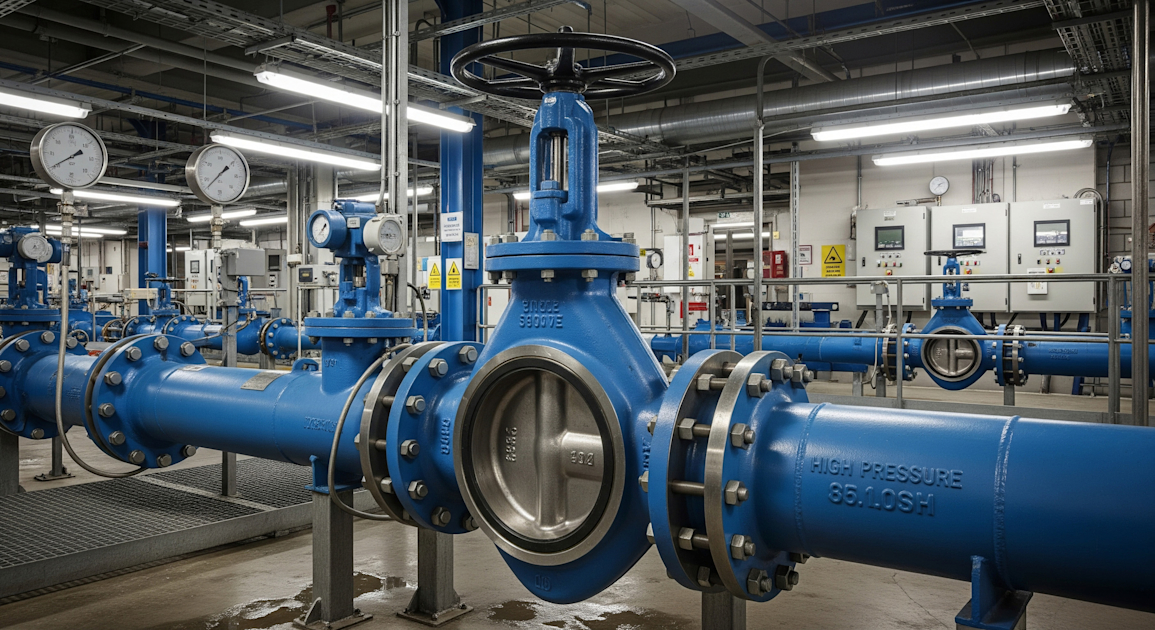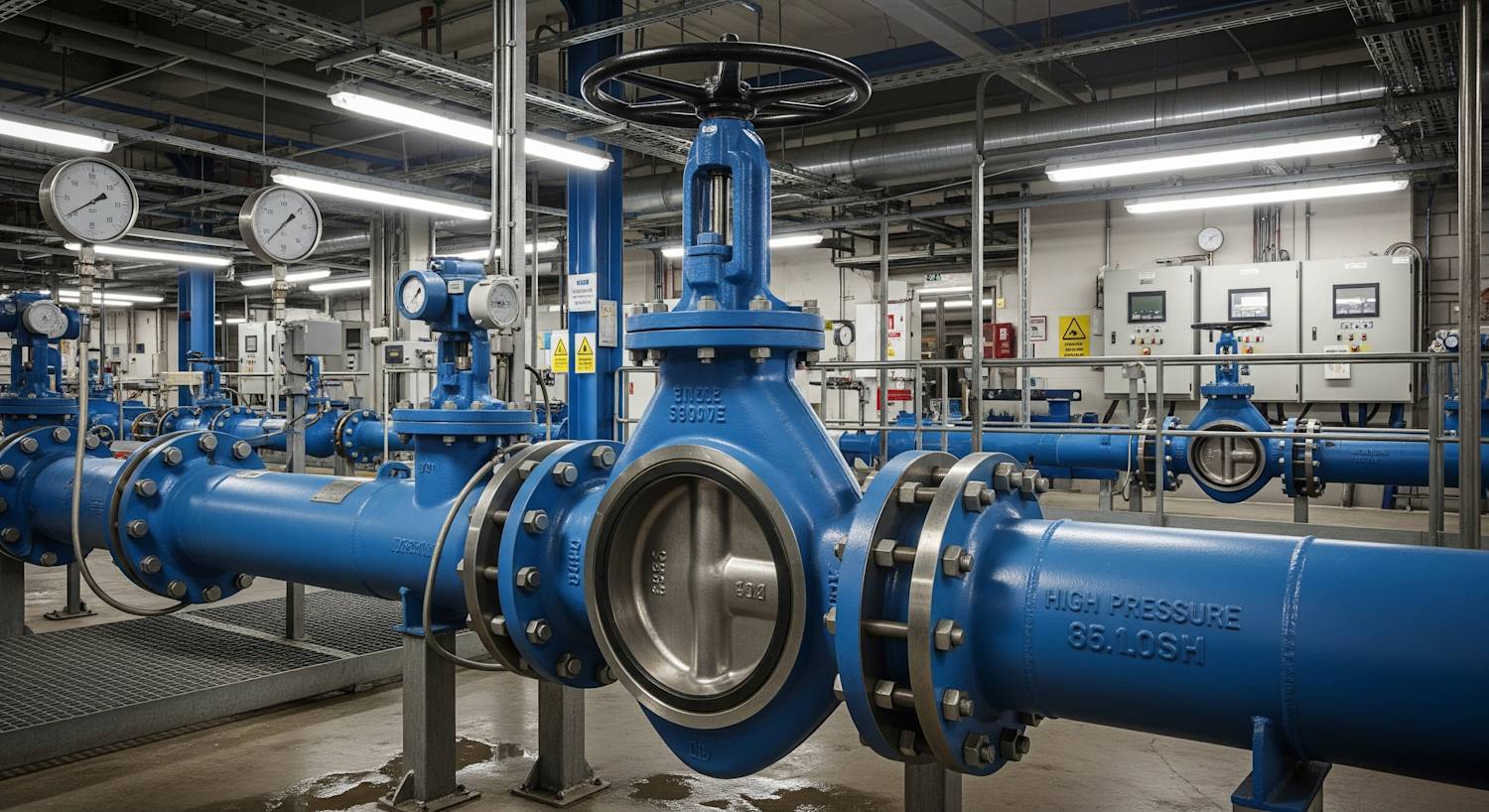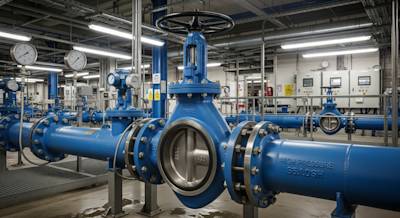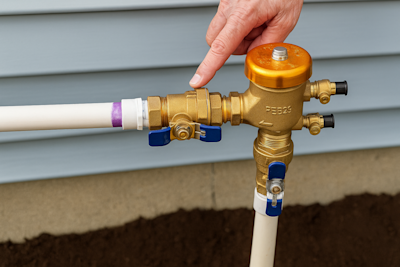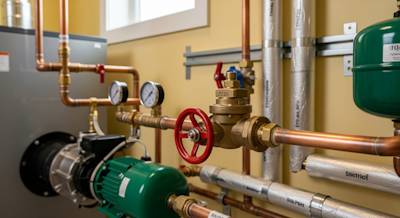Navigating the industrial world, one unavoidably encounters a plethora of equipment with a wide variety of applications. Notably, the Butterfly Valve stands out – an essential component in fluid control systems. In this comprehensive article, we will divulge in-depth into the multifaceted world of the butterfly valve, its unique design characteristics, applications, and the factors guiding its selection process.
Understanding the Basic Concept of a Butterfly Valve
A butterfly valve is a quarter-turn rotational motion valve employed to stop, regulate, and initiate fluid flow. The typical butterfly valve has a disc mounted on a rotating shaft. When the valve is fully closed, the disc blocks the line. Conversely, when the valve is fully opened, the disc is rotated a quarter turn to allow an almost unrestricted fluid flow.
Butterfly Valve Design Elements
There are several essential elements that are standard in butterfly valve designs, which serve different purposes:
- Valve Body: This houses the internal parts, connecting between pipe flanges.
- Disc: This is the component that allows or obstructs the flow. It positions at the center of the valve body.
- Shaft: This part goes through the disc at the middle (a concentric design) or slightly offset (an eccentric design).
- Seat: This is the interior material of the valve body that the disc seals against--an incredibly crucial part in ensuring the valve's tight shutoff capability.
- Operator: It's the mechanism used to turn the valve on or off, allowing for easy handling of the valve's operation.
Types of Butterfly Valves
There are four main types of butterfly valves, characterized by their construction or sealing method:
- Concentric Butterfly Valves
- Double-eccentric Butterfly Valves (High Performance)
- Triple-eccentric Butterfly Valves (Zero Leakage)
- Quadruple-eccentric Butterfly Valves
These designs offer different levels of sealing, flow control, and pressure handling, catering to a diversity of applications in various industries.
Butterfly Valves vs Ball Valves
A common comparison in the valve industry is between the butterfly and ball valve. They both serve to control the flow of fluids but have a few key differences:
- Design: While both have a quarter-turn design, butterfly valves are known for their compact and lightweight design compared to their counterparts – the ball valves.
- Operation: The operation of a butterfly valve is quicker due to the disc's design whereas, for a ball valve, the operation is slower due to the ball and shaft design.
- Price: Generally, butterfly valves are more cost-effective than ball valves given their simpler, lighter, and compact design.
- Sealing: Ball valves typically offer a better seal than butterfly valves, making them better suited for high-pressure applications.
Selecting the Right Butterfly Valve
When selecting a butterfly valve, several factors need to be taken into consideration:
- Size of the pipeline: Larger pipelines may require larger butterfly valves for effective operation.
- Type of fluid: Different liquids and gases have different properties that can affect the valve's performance.
- Pressure and temperature conditions: Considering the operating conditions is crucial to ensure the valve's longevity and optimal functionality.
- Required leakage rating: Depending on the application, this can be critical.
- Required disc and seat material: Material selection is based on the media that will flow through the valve and the needed service life.
Frequently Asked Questions about Butterfly Valve
What is the Primary Function of a Butterfly Valve?
The main task of the butterfly valve is to control the flow of fluids or gases within a system. It's the ability to provide fast opening and closing capabilities makes it an ideal option for this purpose.
Is There a Difference Between a Butterfly Valve and a Ball Valve?
Yes, there are several differences between a butterfly valve and a ball valve. The main difference lies in their design and functionality. A ball valve uses a sphere with a hole in it, while a butterfly valve uses a disc. Despite both being used for flow control, ball valves are generally more durable, provide a better seal but are more expensive than butterfly valves.
Where Can Butterfly Valves Be Used?
Butterfly valves are used widely in various industries due to their efficiency and affordability. They are commonly found in water distribution systems and chemical services. They are also used in HVAC systems for modulating or isolating the flow of the coolant.
Is There Any Specific Installation Direction for Butterfly Valves?
Butterfly valves can be installed in any orientation. Regardless of the direction of the fluid flow, there won't be any negative impact on the valve’s performance. The orientation of the butterfly valve is usually determined by the system's design and convenience of maintenance and operation.
What Materials are Butterfly Valves Made From?
The materials used to create butterfly valves can differ largely based on the environment and the type of fluid it would deal with. However, ductile iron, stainless steel, cast iron, and aluminum are the most common materials. These material selections ensure the valve's longevity and its resistance to various fluids and temperature conditions.
How Do You Maintain a Butterfly Valve?
Maintenance of a butterfly valve primarily involves regular inspections for any leaks or drops in performance. Regular cleaning to remove any build-up is necessary. For high-stress environments, it's recommended to carry out preventive maintenance to replace parts before they fail.
Can Butterfly Valve Control Flow?
Yes, one of the main applications of butterfly valves is to regulate the flow of fluid in a system. By rotating the disc, the flow can be controlled from full open, to partial, to complete shut-off.
How is a Butterfly Valve Sealed?
Butterfly valves are typically sealed through a rubber seat that surrounds the perimeter of the disc. When the valve is closed, the disc squeezes against this seat, creating a seal and preventing the flow of fluids.
Pros of Butterfly Valves
Easy to Operate
One of the significant advantages of butterfly valves is that they are relatively easy to operate. Unlike other valves that require a handle to operate, a butterfly valve just requires rotation of the disc to open or close it. This means that even untrained operators can easily use butterfly valves. The operation can be done manually or by using an actuator.
Less Space Requirement
Butterfly valves are designed in such a way that they require less space compared to other types of valves. They have a compact design which makes them suitable to be installed in tight spaces. This is especially beneficial in industries where space is at a premium.
Lower Cost
Another major advantage of butterfly valves is their cost-effectiveness. They are generally less expensive to buy, install, and maintain than other types of valves. This can lead to significant savings, especially for large installations where thousands of valves may be required.
Lightweight Design
Butterfly valves are also characteristically lightweight. This makes them easier to handle during installation or maintenance operations, reducing the risk of injury to workers.
Fast to Open and Close
Butterfly valves are also renowned for their quick opening and closing times. This can be beneficial in situations that call for immediate start or stop of fluid flow.
Cons of Butterfly Valves
Limited Pressure and Temperature Ratings
Butterfly valves have limited pressure and temperature ratings compared to other types of valves. This makes them unsuitable for use in high pressure and high-temperature applications. It also limits their usage in certain industries or applications.
Cavitation and Chattering
Butterfly valves can also experience cavitation and chattering, particularly at higher flow rates. Cavitation is where liquid in the valve flashes into steam and then immediately condenses back into a liquid, which can cause the valve to chatter or vibrate. This can cause damage over time, leading to premature valve failure.
Limited Sealing Capabilities
Butterfly valves may not provide as tight a seal as compared to other types of valves. This makes them unsuitable for applications that require a perfect, leak-tight seal.
Reduced Flow Control Capabilities
Butterfly valves are great for simple open-and-closed applications, but when it comes to moderate flow control, they may not be the best choice. They do not provide the same level of regulation as other valve types because of their design.
Not Suitable for Throttling
Additionally, butterfly valves, while being excellent for full on, full off control, are not typically suitable for throttling purposes. Throttling can cause excessive wear on the disc and the seals, leading to reduced operational life.
Limited End Connections
Butterfly valves typically only have flanged end connections, which limits their versatility in terms of installation. Other valve types offer more options, including threaded, socket weld, and butt weld connections.
Myths and Misconceptions About Butterfly Valves
One of the most widespread mechanical devices in fluid processing and control is the butterfly valve. Its name comes from the disc in the middle that rotates, much like a butterfly's wings. Even though these valves are extremely common, there are many myths and misconceptions that surround them. This comprehensive list aims to debunk these incorrect notions and provide a clearer understanding of these crucial components.
Myth 1: Butterfly valves are not suitable for regulating flow
One common misconception about butterfly valves is that they're not suitable for flow control. In reality, they can be excellent for this function. When the disc in the butterfly valve rotates, it either opens or closes the valve, thus controlling the flow. You can also achieve intermediate positions for finer control. The key is to pair the butterfly valve with the right actuator and controls.
Myth 2: Butterfly valves cannot handle high pressure
Another misconception that people often have about butterfly valves is that they can't handle high-pressure situations. It's important to understand that pressure handling capability depends on the construction and material of the valve, and not the type. High-performance butterfly valves, for example, can handle high pressures without any problem.
Myth 3: Butterfly valves have poor sealing capabilities
This misconception probably stems from the fact that early butterfly valve designs had some sealing issues. However, technology has advanced significantly, and today's butterfly valves can offer superior sealing capabilities, especially when equipped with elastomeric seats or dry shaft configurations.
Myth 4: Butterfly valves are not durable
Butterfly valves are often seen as less durable due to their lighter construction compared to other valve types, such as ball or gate valves. However, durability is not entirely dependent on weight and size. The longevity of a butterfly valve depends on many factors like the quality of materials used, the operating conditions, and regular maintenance. Many high-quality butterfly valves can serve effectively for many years without getting damaged.
Myth 5: Butterfly valves are only for water applications
Butterfly valves are versatile and can be used in various applications, not just water. They are widely used in different sectors, including industrial, agricultural, and domestic applications. Besides water, they can handle gases, slurries, semi-liquids, and even certain dry materials.
Myth 6: Butterfly valves induce high pressure drop
This is a partial misconception. While it is true that butterfly valves can generate some pressure drop, this depends largely on the design. A relatively fully opened butterfly valve does not introduce a significant pressure drop. If the pressure drop is a critical factor in your system, you can adjust the disc's positioning or opt for a high-performance butterfly valve.
Myth 7: Butterfly valves are more expensive than other valve types
The price of a valve depends on things like the materials, design, size, pressure rating, and additional features, rather than the valve type. Butterfly valves can in fact often be more cost-effective than other valve types, especially for larger pipe sizes. The relatively simple design of a butterfly valve usually results in less maintenance cost in the long run too.
Myth 8: Butterfly valves cannot be used in high-temperature applications
Similar to the pressure handling misconception, many believe butterfly valves can't handle high temperatures. This isn't true. The temperature a butterfly valve can endure depends on its design and materials. Metal-seated butterfly valves can handle temperatures over 500 degrees Fahrenheit.
Myth 9: Butterfly valves always require flanges to install
While flanged butterfly valves are common, there are other variants available that don't require flanges. Wafer-style and lug-style butterfly valves can be installed between existing pipe flanges, providing a more compact and cost-effective solution.
By dispelling these misconceptions, we hope to shed some light on the true capabilities and versatility of butterfly valves. Understanding these facts can help individuals and industries make educated choices when it comes to choosing the right valve for their specific needs.
Summary
Butterfly valves are definitely an essential piece of equipment in many industries. Their ability to control the flow of various substances is truly indispensable. These valves deliver top performance and high durability, making them a long-term investment that offers solid payback.
So, if you're looking for a solution to control and regulate flow in your pipelines, you might want to consider the butterfly valve. They are known to be cost-effective and low on maintenance, proving themselves to be practical and reliable. Plus, they offer a higher level of adjustability compared to other types of valves used in industry.
It's clear that the butterfly valve is not only an efficient tool in flow control, but also represents an innovative design in valve technology. With its versatility and functionality, it continues to meet the unique and demanding requirements of different industries. Without a doubt, the butterfly valve plays an integral role in enhancing operational efficiency.
About KYPD Plumbing
KYPD Plumbing is a local expert serving Lexington, KY, dedicated to providing top-notch plumbing solutions to both residential and commercial clients. With years of experience under our tool belts, we are skilled in a wide range of services including repairs, installations, and maintenance tasks. Our team prides itself on its professionalism, reliable workmanship and attention to detail all offered at fair prices. We're not just plumbers here at KYPD – we're a team of problem solvers passionate about providing smooth, efficient services which leave our customers satisfied. Trusting us means living in a worry-free environment where plumbing issues are a thing of the past.
Tags: Valve, Industrial, Flow control,

